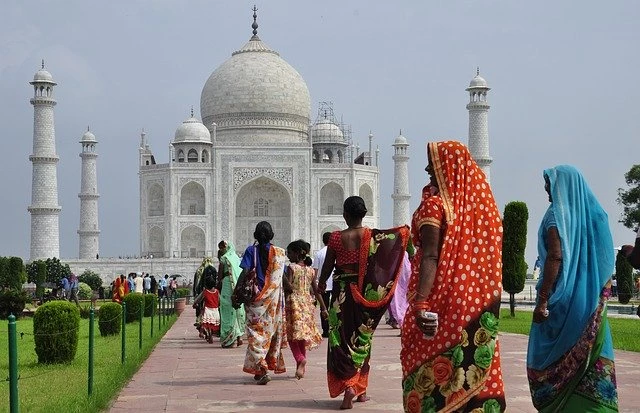Comparison of Indian and Chinese Diasporas
China and India are very similar and different at the same time. Both countries have been existing since thousands of years and individually developed as unique civilizations. Colonialism caused bad influence for each of them. However, after independences gained in late 1940’ their history and development differ a lot. India and China both have large Diaspora in all continents. What are characteristics of both of them? I would like to look through similar and uncommon features of them. That’s the main idea I am considering here.
The Indian Diaspora has a population of 20 million. Its included for 10 percent foreign investments. The advantage of immigrants from India is their intellectual capital, and thus relatively good education. The widespread fame of Indian IT specialists is willing Microsoft to build in India the second after the American research center. The Chinese Diaspora is about 55 mln and cause also a lot of foreign investments in China. In 2007 Diaspora’s contribution to FDI when it comes to China was 60-70% and when it comes to India less than 10% . That time China’s economic strength was mostly based on manufacturing, hence foreign investments provided also in a large scale by rich Diaspora (for example from Hong Kong, Macau, Taiwan ) helped while using developing strategy.
India officially started economic reform in 1991, which is much later than China. It also contributed to less percentage of FDI provided by Diaspora.
Economical principles which uses two of these Diasporas are not far from each other. Overseas Chinese and Indians are relatively wealthy and successful what contributes to supply indicator. Both countries at the other hand welcome willingly foreign investment with favourable policies (including Diaspora’s sources) an that we can call here demand.
Motivations and the way of assimilation in the host country is similar too. Even after getting citizenship majority of the group (both Chinese and Indians) remain connected to their motherland. Indeed, strong nationalism is visible and even influence on foreign policy towards homeland. Both The Chinese and the Indians living abroad can help bridge the gap between the East and the West, to understand difference , respect each other and to destroy colonial unequal stereotypes. Chinese and Indians are different than the others and it’s even visible by appearance. The ways how they’re treated because of their uniqueness and people’s curiosity may be related.
History of Chinese immigrants is longer than Indian immigrants. It caused that the speed of developing businesses and contributing to host countries (and their appreciation) is not equal. The Chinese are known for their business acumen. The motherland respect overseas citizens and their contribution. Even after moving out of China, Chinese tend to help China. I happens that government use similar action- sending temporarily citizens abroad to study, promote culture or teach language. Of course, it is nothing that nobody else would be doing, but the scale of these actions is impressive.
Chinese Diaspora scores high in creating brain chain among diasporas.
The government has a special cabinet ministry to deal with overseas Chinese affairs called The Overseas Chinese Affairs Commission (OCAC) and All-China Federation of Returned Overseas Chinese (ACFROC). It creates special economic zones, pass preferential laws, and use patriotic appeals. All these to attract overseas Chinese. With success.
Indians at the other hand are not willingly welcome back in motherland. For long time they’ve been perceived even as a traitors when leaving country or after decades as different nationality. It’s slowly changing. Both China and India treat Diasporas as political, economical, educational potential. The problem is corruption. The Foreign Contributions Regulation Act do not ease it. Require a lot of paperwork.
However, The government of India established a High Level Committee on the India Diaspora in 2000 and the Ministry of Overseas Indian Affairs (MOIA) in 2004. Diaspora is more and more perceived as a chance for the country.
The Diaspora is a source of soft power approach. The two countries are using it for example in Southeast Asia. China is preparing The Belt and Road initiative, which some of countries see as a threat. China is going to use overseas citizens to win this game and later during initiative as well. China has established more than 41 Confucius institutes in Southeast Asia and the cost of funding were also provided by overseas Chinese (especially in Thailand where is the biggest number of institutes).
India cooperates with ASEAN on enhancing educational ties. Example is agreement signed by India and Malaysia. As a result of demand for learning English among the Malays, Indian sent teachers there and they dwelled as Diaspora. In 2015 Prime Minister Modi addressed the Indian Diaspora, while announcing a grant of $1 million to the India- Students Trust Fund which will financially assist Malay-Indian students, which indicates that Diaspora is rather perceived as an educational context, not as business matter. Indians can become unofficial ambassadors of their homeland too. The role is to watch out for future opportunities and report them back to India. To develop this kind of network people-to-people contact is required and it’s reached by various associations.
As we could analyze the Diasporas provide a lot of important functions for homeland. Efficient, large and rich Diaspora may help while developing economy and even with political aspects or in diplomatic areas or cultural influences. However, the efficiency of its actions is also connected with countries perception and gains. The long history of Chinese Diaspora and Chinese business acumen seem that had helped a lot and wide network is still contributing even in harder times for bilateral relations between China and the West. Probably these are the main reasons behind bigger efficiency of Chinese Diaspora. India didn’t have such an advantage, but situation is changing rapidly. Huge disadvantage was distrust towards emigrants. The country has recognized potential of emigrants and overseas Indians are also more and more appreciated. Both China and India are compared to past very important international players and their strategies, in spite of their difference, both aim for important goals. Bibliography
Articles in English:
Anusha Sooriyan, The Unofficial Ambassadors: A Comparative Study of Indian and Chinese Diaspora In Southeast Asia, https://www.c3sindia.org/culture-history/the-unofficial-ambassadors-a-comparative-study-of-indian-and-chinese-diaspora-in-southeast-asia-by-anusha-sooriyan/
Rachel Brown, What Can India and China Learn From Each Other About Diaspora Policy? China and India have massive overseas diasporas. How do they strategically leverage this important resource?, https://thediplomat.com/2017/02/what-can-india-and-china-learn-from-each-other-about-diaspora-policy/
Reshma Patil, India and China need a push to encourage more people to live across the border,
Sadananda Sahoo, A Tale of Two giant Diasporas: How Chinese Diaspora outperformed their Indian Counterparts?, https://www.grfdt.com/PublicationDetails.aspx?Type=Articles&TabId=3037
Zhiqun Zhu, Two Diasporas: Overseas Chinese and Non-resident Indians In Their Homelands’ Political Economy, https://www.rcss.org/wp-content/uploads/2016/07/Chinese-and-Indian-Diaspora.pdf
Articles in Polish:
Mroziewicz Krzysztof, Tygrys ściga smoka, https://www.polityka.pl/tygodnikpolityka/swiat/207515,1,tygrys-sciga-smoka.read?page=3&moduleId=4781


Dodaj komentarz